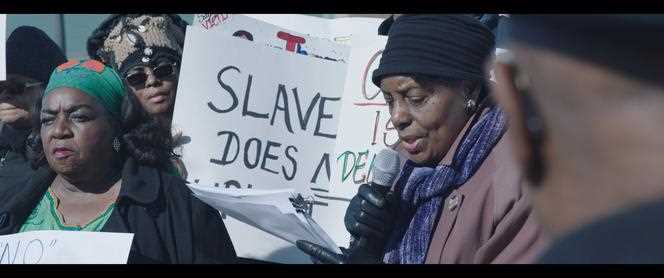THE OPINION OF THE “WORLD” – TO SEE
In the distance, a frozen landscape of skyscrapers. Nearby, a zone of desolation swept away by a long tracking shot, the course of which stops at the intersection of two roads, where three men are standing. One remembers: “There was Uncle John’s bar on the corner. And, when we came, we had to cross, because there were so many drunks, it was an area to avoid, man. » Where the camera no longer shows anything but weeds and abandoned houses, he redraws the places as he once knew them: here, the furniture stores, opposite, the one for tools, not far away, the bakery, next door, the jewelry store, on the square, the market. We are on the outskirts of downtown Detroit (Michigan), the former automobile capital of the world (from the 1930s to the 1960s) and the first major city in the United States to declare bankruptcy, on July 18, 2013, at the following the subprime crisis.
Ruins have replaced the splendor of the industrial era, the desert has replaced turmoil, and it is to a dying world that Andreï Schtakleff’s third feature film returns its spark. Which revives and is transmitted from one testimony and one story to another, expressed by men and women, mostly African-Americans, whose delicacy of the subject upsets as much as it enlightens. Through Detroiters, a story is being told, much larger than that of the city in question. A history that displaced populations, perpetrated slavery, despised the human in favor of productivity, led to the agony of capitalism and the end of a civilization.
Infernal cadences
Almost all of them knew Detroit when it was booming. Many still remember the time when Henry Ford (1863-1947) went to the south of the United States (Georgia, Mississippi, Alabama) to find black labor for his factories. Some have known the infernal cadences of the chain; for 4 dollars an hour, the same gesture repeated faster and faster, to the point that workers sometimes went into a trance. These people tell, with a certain nostalgia and without acrimony, how much they loved the cars they made knowing that they would never be able to buy one. They smile at other, happier memories: the bustle and lights of the city, the singers and musicians who filled the bars, the meetings and the militant struggles.
Today, Sandra and Charles Simon – two veterans who fought against the Vietnam War and for civil rights – have chosen not to give up and are trying, with the help of architects, to rebuild the neighborhood. Others, on the other hand, lament the state of their city, which is said to be experiencing a renaissance. “But it is reborn for the rich”, corrects one of them. Above all, they are worried about the young people who have only known this desolate landscape and have few illusions.
You have 12.67% of this article left to read. The following is for subscribers only.
